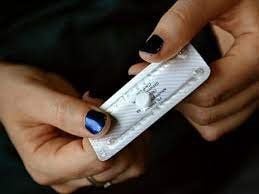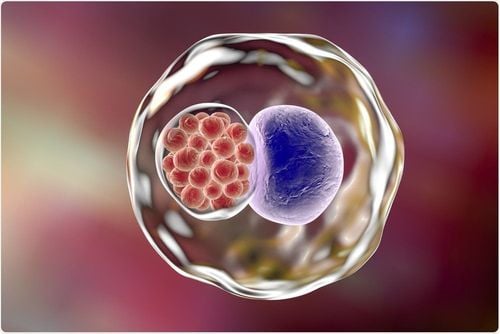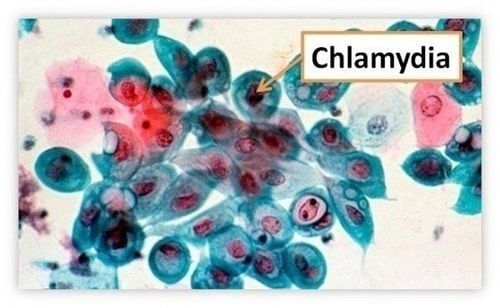This is an automatically translated article.
Chlamydia trachomatis is a bacteria that causes disease in humans. If infected with Chlamydia but not treated promptly, it can lead to many dangerous complications, especially on the reproductive organs of both men and women. So when should a Chlamydia test be done and what does the Chlamydia test mean?
1. What is a Chlamydia test?
Chlamydia is a very common sexually transmitted infection (especially in developed countries). Around 131 million people worldwide suffer from this disease each year. The disease can affect both men and women, especially under the age of 25. The rate of sexually transmitted Chlamydia is 50 times higher than syphilis and 3 times higher than gonorrhea.
Chlamydia test is a test to find Chlamydia in someone who has had sex. There are many different types of Chlamydia that cause disease in humans. This test uses a sample of body fluids or urine to find out if Chlamydia bacteria (Chlamydia trachomatis) is present and causing an infection.

Bệnh Chlamydia là bệnh lây nhiễm qua đường tình dục
2. When to get tested for chlamydia?
Patient has symptoms of abnormal vaginal discharge with abdominal pain (for women) or abnormal discharge from the penis and pain when urinating (for men): symptoms of Chlamydia infection. Female under 25 years of age who have had sex. Unprotected sex Unprotected sex with new or multiple partners Same-sex sex Chlamydia test during the first prenatal visit and once in the third trimester for pregnant women under 25 years of age. Three months after treatment for STIs. People with many social diseases, especially HIV/AIDS Infants with symptoms of conjunctivitis (red, swollen eyes, eye discharge)

Những người quan hệ đồng tính cần xét nghiệm Chlamydia
3. Meaning of Chlamydia test
Chlamydia test is a test to find Chlamydia in the body, pinpoint the exact cause of the disease symptoms. If left untreated, Chlamydia can lead to serious health problems. Chlamydia can also increase the risk of transmitting sexually transmitted diseases such as HIV or gonorrhea.
Complications in women: pelvic inflammatory disease (PID) leading to infertility (damage to the fallopian tubes), increased risk of ectopic pregnancy, Chlamydia causing premature birth or infecting the baby at birth causing eye infections in the baby , pneumonia and possibly blindness, even postpartum death. Complications in men: urinary tract infections, epididymitis, proctitis, affect sex life and normal activities. If the test result is positive for Chlamydia, then the patient has the disease and must be treated with antibiotics.
4. Chlamydia test classification
The most common Chlamydia test is the nucleic acid amplification test (NAAT): amplification of the DNA of the bacterium Chlamydia trachomatis. This test is more sensitive than chlamydia tests and can be done with urine samples from both men and women, helping to reduce gynecological exams in women. Another chlamydia test is the direct fluorescence antibody (DFA) test: detects Chlamydia antigens. Chlamydia DNA genetic material test (also known as nucleic acid hybridization test). This test is less sensitive than the NAAT. Enzyme-linked immunosorbent assays (ELISA, EIA) help find substances (antigens) that activate the Chlamydia immune system cultured for pathogenic bacteria from a sample of body fluids (cervical, urethral, etc.) eyes, rectum, or throat), this test takes longer (5-7 days) than the other test.

Chlamydia nuôi cấy tìm vi khuẩn gây bệnh từ một mẫu dịch cơ thể
5. Notes when performing Chlamydia test
With urine samples, the patient needs to do not urinate for 2 hours before collecting the sample, do not wipe the genital area before urinating. Collect the first stream of urine, immediately after urinating. With body fluid samples taken directly from affected areas such as: cervix, urethra, vagina, rectum or eyes.. With sample from cervix: Do not douche or use topical cream. vagina (in women) or medication within 24 hours before the test. With the sample collected from the eye, the doctor will gently brush the inside of the upper and lower eyelids with a cotton swab. To collect a sample of fluid from the eye, the doctor needs to gently brush the inside of the upper and lower eyelids with a cotton swab to collect the sample. If infection is suspected, do not have sex until test results are available. If the result is positive, the patient should not have sex for 7 days after starting treatment. Sexual partners of the infected person should also be treated for Chlamydia to prevent reinfection of the infected person.
Vinmec International General Hospital offers a Package of Examination and Screening for social diseases to help customers detect diseases early and have effective treatment and prevent dangerous complications. The screening package for social diseases at Vinmec is for all ages, both men and women.
When registering for the Social Disease Screening Package, customers will receive: Dermatology specialist examination; Perform tests such as: HIV Ab rapid test, Chlamydia rapid test, Treponema pallidium rapid test, qualitative and quantitative Treponema pallidum TPHA test, bacteriological smear test and staining fungal test soi...
To register for examination and treatment at Vinmec International General Hospital, you can contact Vinmec Health System nationwide, or register online HERE.













